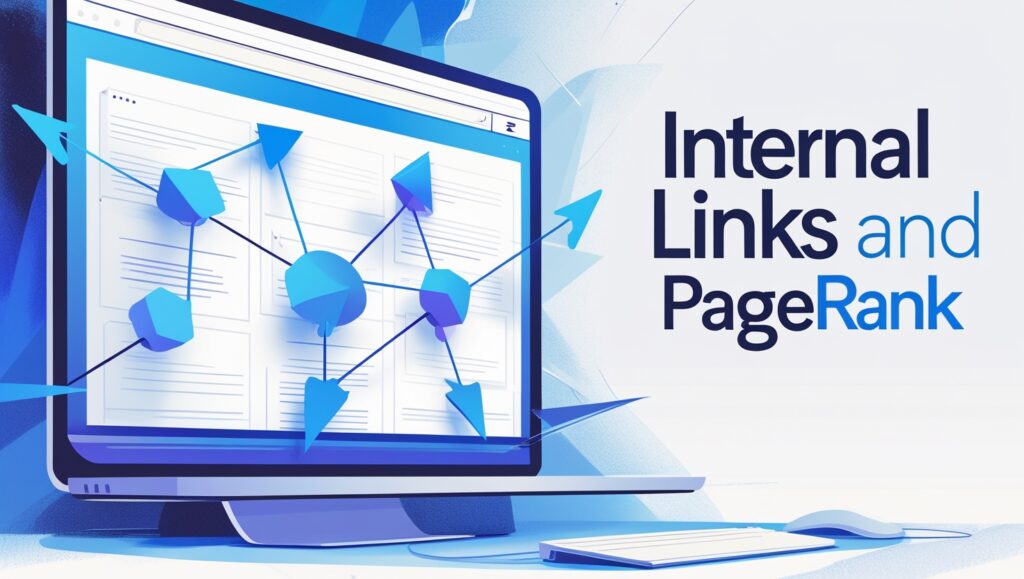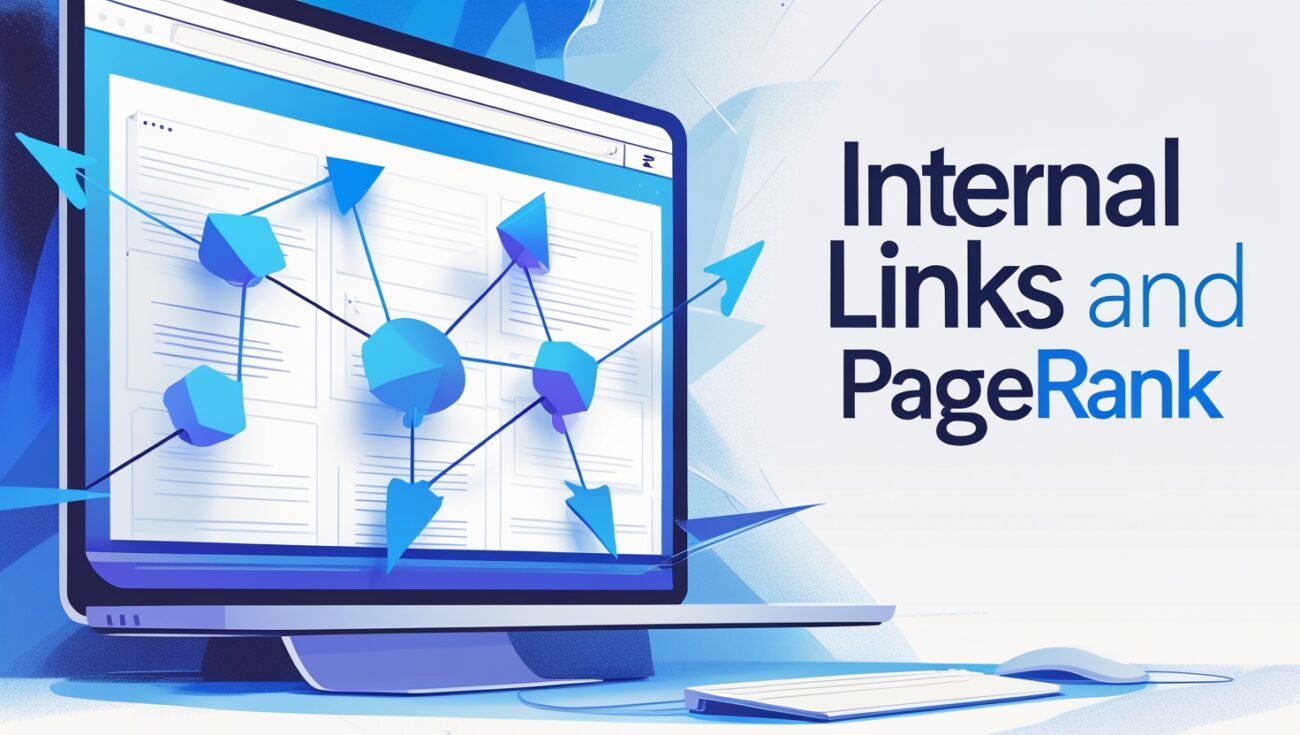The Relationship Between Internal Links and PageRank
When I first started in SEO, I thought of PageRank as a mysterious, almost mythical metric that was impossible to influence. I would spend all my time on external links, thinking that was the only way to get a “vote of confidence” from Google. It wasn’t until I started to look at my own website’s architecture that I realized how much control I had over my site’s PageRank.

Table of Contents
I discovered that the relationship between internal links and PageRank is one of the most powerful and often misunderstood aspects of SEO. A smart internal linking strategy is the most effective way to influence the flow of authority on your site, which can directly impact your rankings. If you’re ready to stop guessing and start taking control of your site’s authority, this guide is for you.
What is PageRank? A Simple Analogy
PageRank is an algorithm that measures the importance of a page based on the links pointing to it.
- The Analogy: Think of every link as a “vote of confidence.” A link from a strong, authoritative page is a more valuable vote than a link from a weak page. A page with many high-quality links pointing to it will have a higher PageRank, or more “authority juice.” The important thing to understand is that internal links also pass this authority.
The Two Core Effects of Internal Links on PageRank
- Effect #1: The Flow of Authority. PageRank flows from one page to another through links. A page with a high PageRank can pass a portion of its authority to any page it links to. A smart internal linking strategy is all about directing that authority juice from your strongest pages to the pages you want to rank higher.
- Effect #2: The Signal of Importance. A page with many internal links is seen as more important by Google’s algorithms. This signals that the page is a key part of your website’s website structure and is worthy of more attention from crawlers. A page that has no internal links (an orphan page) receives no authority from the rest of your site and is often not even crawled or indexed.
The PageRank-Boosting Internal Linking Playbook
Action 1: Find Your High-PageRank Pages
The first step in a smart PageRank strategy is to find your high-authority pages. These are the pages that have the most link equity to pass to other pages. You can find them by looking at your backlinks or by using a tool that provides a PageRank-like metric. A tool can analyze your entire website and identify your most authoritative pages.
Action 2: Link from Authoritative Pages to Important Pages
Once you have a list of your authoritative pages, create a strategic network of links from them to the pages you want to rank. For example, if you have a popular blog post, link from it to your product pages or service pages. This passes valuable link equity to those pages and helps them rank higher.
Action 3: Fix Your Leaky Pipes
Broken links and redirects are like “leaky pipes” that drain the flow of PageRank. A link that goes to a 404 page or is a useless redirect is a wasted opportunity that stops the flow of authority dead in its tracks. You need to consistently audit your website for these issues and fix them immediately.
The Tool That Automates PageRank Optimization
Manually managing all of the above is a monumental task. How do you know which pages have the most PageRank? How do you find every broken link on your site? The truth is, you don’t. You need a tool to do it for you. Internal linking automation can scan your entire site and provide you with a clear, actionable list of every opportunity and issue, taking the guesswork and manual labor out of the process. Ready to stop guessing and start building a high-ranking website today? Discover how Linkbot can help you.
Conclusion: Take Control of Your Link Equity
The relationship between internal links and PageRank is one of the most powerful and direct ways to influence your SEO. By taking control of your link equity, you can build a high-ranking website that Google loves and that will serve you for years to come.
My journey taught me that a major mistake is seeing SEO as a mystery. By implementing a smart, corrective approach to my website, I made the mental shift from being a spectator to an active participant in my website’s success. This simple realization took the overwhelm out of SEO and turned it into a series of logical, manageable steps that I could control.
The long-term, compounding effect of fixing these mistakes is what makes it so powerful. Each time you add a thoughtful, relevant link, you are not just performing a task; you are building your website’s authority, one link at a time. These small, consistent improvements add up to a significant competitive advantage over the long term, making your website an increasingly powerful asset.
I can say from personal experience that there is a special kind of satisfaction that comes from seeing a direct correlation between a new link and a ranking boost. It’s the feeling of taking a tangled mess and organizing it into a clean, logical network. The result is a website that just feels better to navigate, for both users and the people managing it.
A clean internal link profile also has a huge impact on your website’s overall trustworthiness and authority. When a user or a search engine bot lands on your page and sees a clear network of interconnected, relevant articles, it signals that you are a serious, comprehensive resource on the topic. This kind of professional organization is exactly what Google looks for.
The most important part of this foundational skill is building a consistent habit of linking. It’s not about a single audit and then forgetting about it. A good website is a living thing, and it needs regular maintenance to ensure your internal links stay clean, which is a key part of long-term SEO success.
I felt like I was finally in the driver’s seat of my SEO. For years, I had relied on external factors, which felt like I was giving up control of my SEO destiny. But by mastering a simple task like building my internal links, I was proactively building my site’s authority from the inside out, on my own terms, which was an empowering and exciting feeling.
By implementing a strategy that serves both SEO and conversions, you are also directly addressing Google’s E-E-A-T framework. You are demonstrating expertise by creating topical clusters, you are showing authority by linking from strong pages, and you are providing a better user experience, which is a key part of what Google looks for in a trustworthy website.
I’ll never forget the first time I applied my new internal link strategy to a page that was struggling to rank, and it shot up in the search results almost overnight. This was my “aha” moment. I realized that a strategic, well-placed link from a high-authority page was far more powerful than I ever thought possible.
One of the greatest benefits I got from using an automated tool to manage my link profile was the “to-do” list it provided. Instead of being overwhelmed by the sheer size of my website, the tool gave me a prioritized, actionable list of fixes to make. It transformed a monumental, frustrating task into a series of manageable steps that I could tackle in just minutes.
It’s crucial to understand the difference between a simple, generic link and one that’s part of a strategic, mapped plan. A simple link is a one-off connection. A link that’s part of a plan is a purposeful part of a larger network, designed to pass authority and guide a user. The latter is far more powerful.
Ultimately, mastering internal linking is a simple but powerful strategy that transforms a website’s foundation. It’s a low-cost, high-impact fix that can instantly improve your site’s health and SEO performance. It’s the kind of foundational SEO work that every website owner should prioritize.
My final piece of advice is to not be intimidated. Don’t worry about the high cost of manual labor; just focus on making your website a better place for your readers. You will be amazed at the progress you make and the results you can achieve.

